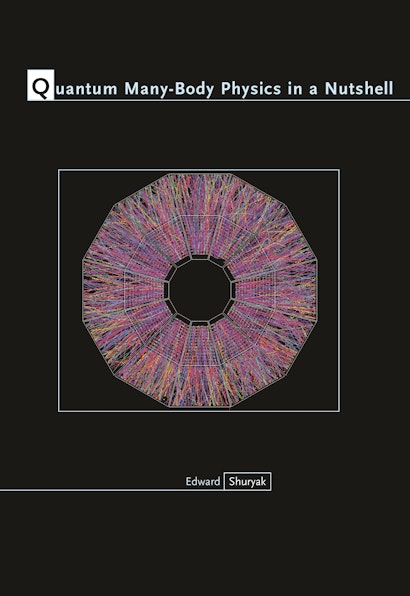Quantum Many-Body Physics in a Nutshell


Hardcover
- Price:
- $95.00/£80.00
- ISBN:
- Published:
- Nov 27, 2018
- Copyright:
- 2019
- Pages:
- 312
- Size:
- 7 x 10 in.
- 107 b/w illus., 2 tables
- Main_subject:
- Physics & Astronomy
ebook
This book provides an essential introduction to the physics of quantum many-body systems, which are at the heart of atomic and nuclear physics, condensed matter, and particle physics. Unlike other textbooks on the subject, it covers topics across a broad range of physical fields—phenomena as well as theoretical tools—and does so in a simple and accessible way.
Edward Shuryak begins with Feynman diagrams of the quantum and statistical mechanics of a particle; in these applications, the diagrams are easy to calculate and there are no divergencies. He discusses the renormalization group and illustrates its uses, and covers systems such as weakly and strongly coupled Bose and Fermi gases, electron gas, nuclear matter, and quark-gluon plasmas. Phenomena include Bose condensation and superfluidity. Shuryak also looks at Cooper pairing and superconductivity for electrons in metals, liquid ³He, nuclear matter, and quark-gluon plasma. A recurring topic throughout is topological matter, ranging from ensembles of quantized vortices in superfluids and superconductors to ensembles of colored (QCD) monopoles and instantons in the QCD vacuum.
Proven in the classroom, Quantum Many-Body Physics in a Nutshell is the ideal textbook for a one-semester introductory course for graduate students or advanced undergraduates.
- Teaches students how quantum many-body systems work across many fields of physics
- Uses path integrals from the very beginning
- Features the easiest introduction to Feynman diagrams available
- Draws on the most recent findings, including trapped Fermi and Bose atomic gases
- Guides students from traditional systems, such as electron gas and nuclear matter, to more advanced ones, such as quark-gluon plasma and the QCD vacuum